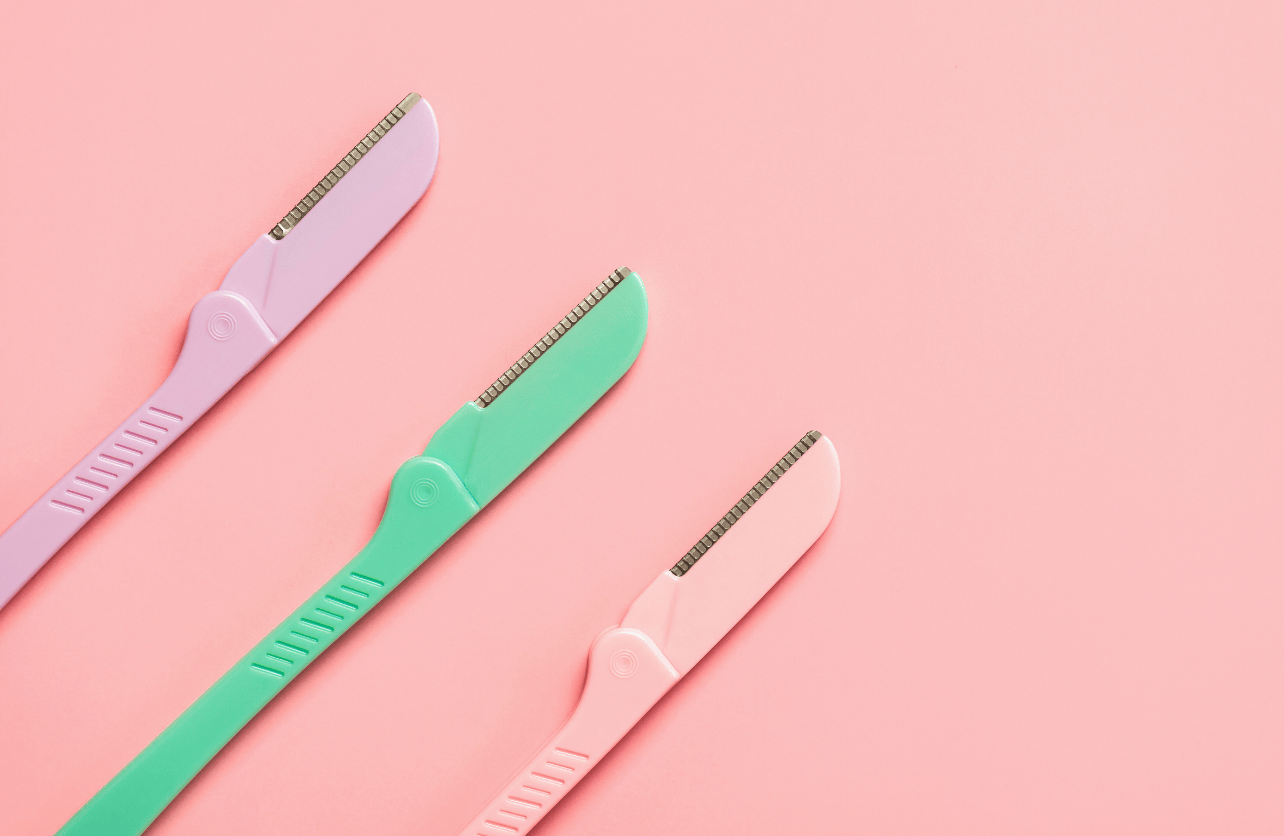Everything You Need to Know Before Trying Dermaplaning at Home

Dermaplaning at home sounds appealing. But if you’ve never done it before, it’s totally normal to feel unsure about where to start. You’re using a blade on your face, after all, and that’s not something to take lightly. While it’s become a popular skincare step, especially for removing peach fuzz and dull surface cells, there’s more to it than just gliding a tool across your skin. Technique matters. So does timing, the tool you use, and what your skin can handle.
As Dr. Jenny Liu puts it, “When it’s not done professionally, you may not always have the knowledge of how to prep and care for your skin and what to use afterwards.” This guide breaks it all down, so you can try dermaplaning safely and get results without messing up your skin in the process.
What Is Dermaplaning?
Dermaplaning is sometimes casually referred to as “face shaving,” but it’s more than just hair removal. If done right, it exfoliates the outermost layer of skin—the stratum corneum—where dead skin cells, debris, and dullness tend to collect. It makes your skin feel immediately smoother and looks a little brighter.
You can get it done professionally using a surgical scalpel (which goes deeper and yields stronger results), or you can do a milder version at home using tools like facial razors or dermaplaning blades. Either way, the idea is the same: clear the surface so your products can penetrate better and your makeup sits more evenly.
But let’s be clear about what it doesn’t do. “It really has not been shown to stimulate collagen production or help with acne scars or hyperpigmentation,” Dr. Liu explains. “Think of it as a physical exfoliation method—it helps, but only as one part of a bigger skincare plan.”
Tools You Actually Need
There are countless tools marketed for dermaplaning, but you don’t need anything fancy to get started. In fact, Dr. Liu recommends either a basic dermaplaning blade with a refillable head or a simple eyebrow razor. “I’ve been using the one from Versed, and I love it because it has a thick handle and refillable blades,” she says.
The key difference between pro tools and at-home options comes down to blade sharpness. A surgical-grade blade, like those used in dermatology offices, offers deeper exfoliation, but it also comes with more risk. For home use, milder blades are safer and easier to manage.
What matters more than the tool is how you prep your skin and how steady your hand is. So, before anything else, learn the technique.
How to Do It: Step-by-Step Dermaplaning at Home
- Start with clean, dry skin.
Wash your face thoroughly and remove all makeup, sunscreen, and oils. “If you like using toner, a hydrating one can help pick up leftover residue,” Dr. Liu suggests.
- Hold your skin taut.
Use your non-dominant hand to gently pull your skin tight in the area you’re working on. This gives you a smoother surface and more control.
- Use a 45° angle.
Place the blade flat against your skin at a 45-degree angle. Never go in perpendicular—you’ll risk cuts, even with a mild blade. “I’ve done this accidentally,” Dr. Liu admits. “It was just a small abrasion, but it heals fast.”
- Shave with light, short strokes.
Move in the direction of hair growth, not against it. Apply no pressure; let the blade do the work. Work in small sections—cheeks, chin, forehead—and wipe the blade as you go.
- Don’t rush.
One side of the face at a time. Take your time, especially around sensitive areas like the jawline or near the nose.
- Look at what you removed.
Yes, it’s oddly satisfying. Dead skin and fuzz build up fast, especially around the cheeks and upper lip.
What to Do After Dermaplaning
Once you’re done, your skin will feel smoother and more vulnerable. A basic moisturizer is often enough to seal things in. If you want to layer in a treatment serum, this is when your skin will absorb it best. “I usually do this at night and follow it with a hydrating serum or a pigment-fighting treatment, depending on what I need,” says Dr. Liu.
But skip the retinol or chemical exfoliants right after if your skin feels irritated. In her words, “If things burn, hold off on activities until your skin calms down.” A simple moisturizer and sunscreen the next day are usually all you need.
How Often Should You Dermaplane?
This is one of the most misunderstood parts of dermaplaning. Many people assume that if once is good, then twice a week must be better. Not true.
“Depending on your skin type and what else you’re using in your routine, once a week is usually enough,” Dr. Liu says. If you’re already using exfoliating acids or retinoids, dial it back. Over-exfoliating is one of the fastest ways to damage your skin barrier, and that’s when problems like flaking, redness, and sensitivity show up.
For most people, once every 1–2 weeks is plenty. Some even do it just monthly for maintenance.
Is Dermaplaning for Everyone?
Not exactly. There are a few situations where dermaplaning isn’t recommended.
- Active acne or broken skin: Going over pimples can spread bacteria and cause irritation.
- Sensitive or compromised skin barrier: If your skin’s already inflamed, dermaplaning can make it worse.
- Raised moles or skin tags: Don’t risk cutting into them—work around them carefully or skip altogether.
Elevating the Shopping Game
Our platform offers in-depth reviews and analyses across various product categories, empowering you to shop with confidence and precision. Here, transparency and detailed research pave the way for smart choices that reflect your needs and values. Join our community and elevate your shopping experience from buyer to expert, one report at a time.